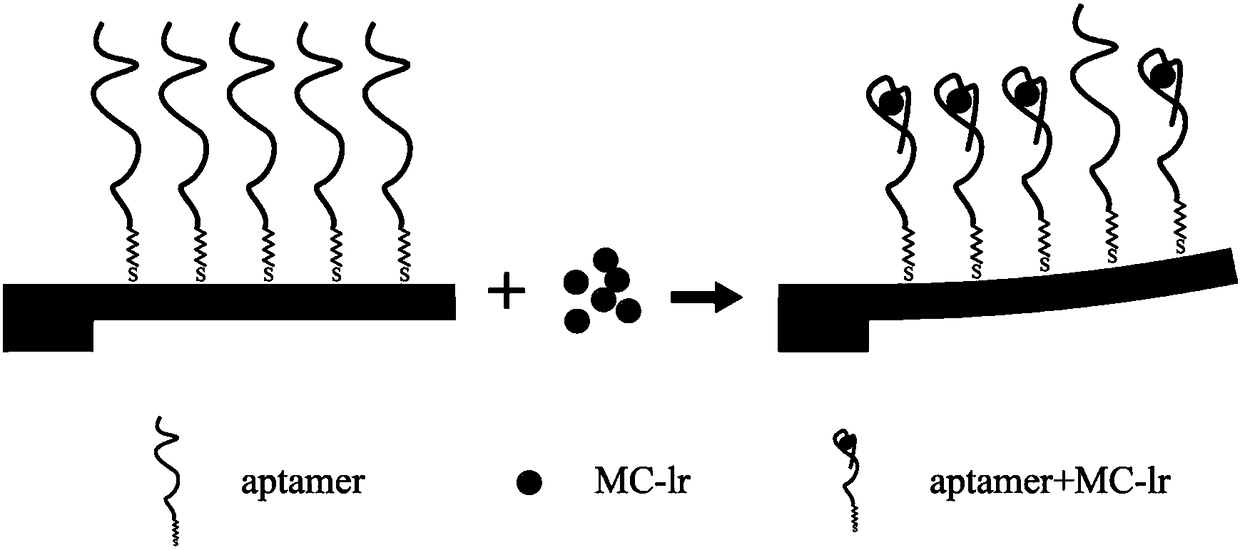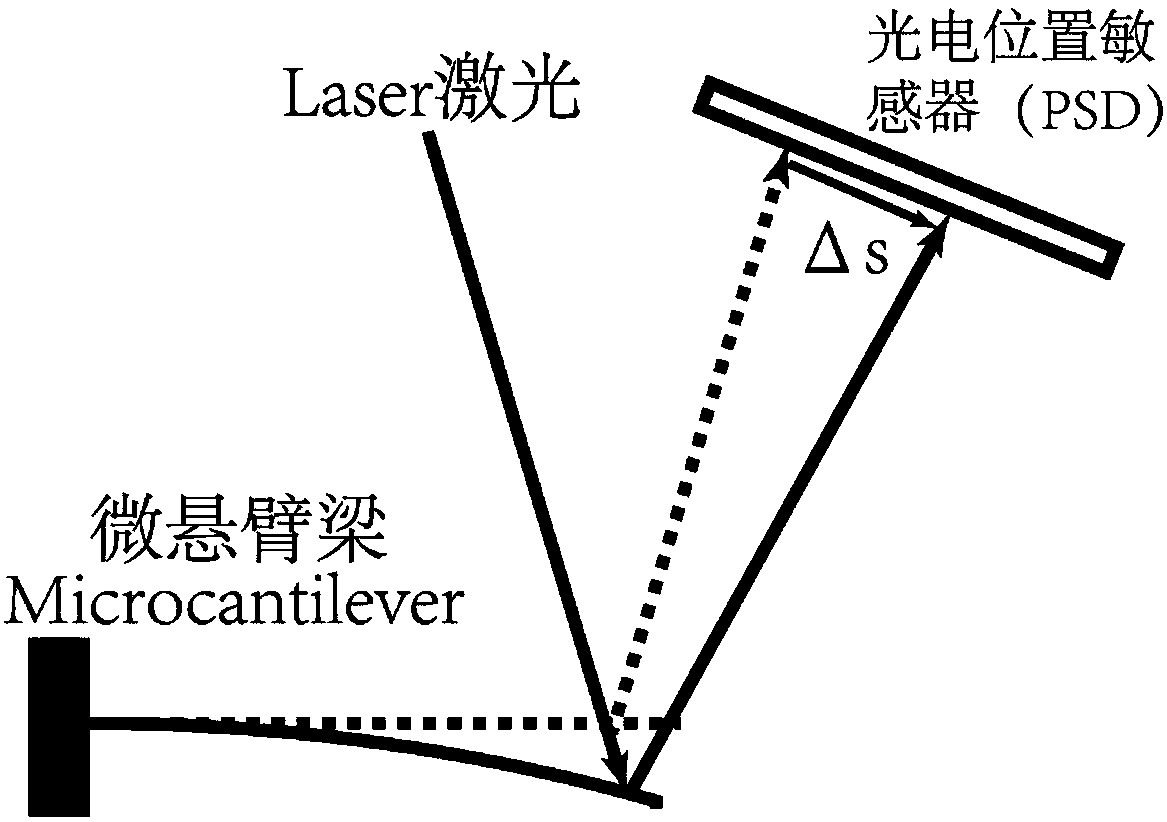Nucleic acid aptamer based micro-cantilever array detection method of MC-LR (microcystin LR)
A nucleic acid aptamer and microcystin technology, which is applied in measurement devices, instruments, scientific instruments, etc., to achieve the effect of combining high efficiency, easy storage, and easy operation.
- Summary
- Abstract
- Description
- Claims
- Application Information
AI Technical Summary
Problems solved by technology
Method used
Image
Examples
Embodiment 1
[0043] Embodiment 1, the modification process of microcantilever array
[0044] Experiment 1 Modification of DNA aptamers on micro-cantilever arrays
[0045] 1) Cleaning: Put the unused microbeam array (purchased from Micromotive Company, Germany) into the enzyme-labeled well plate, add Piranha Dip solution (V(H 2 o 2 ):V(H 2 SO 4 )=1:3) for several minutes, rinsed with deionized water, and dried with nitrogen;
[0046] 2) Aptamer modification: the washed micro-cantilever array was placed in an enzyme-labeled well plate, added to the DNA aptamer solution, and incubated at room temperature for 3 hours. Then use buffer (buffer containing 50mM Tris-HCl, 150mM NaCl and 2mM MgCl 2 , pH=7.5) cleaning;
[0047] 3) Blocking: the modified micro-cantilever array is placed in an enzyme-labeled well plate, 1 mM MCH is added, and incubated for 30 minutes. Then wash with buffer solution and blow dry with nitrogen gas. A modified micro-cantilever array is obtained.
[0048] Experime...
Embodiment 2
[0051] Embodiment 2, detection of MC-LR using microbeam array sensor
[0052] 1) Fixing the microbeam array: Fix the aptamer-modified microbeam array in the reaction pool of the system in Experiment 1 of Example 1 above, add buffer, and flow liquid to remove air bubbles in the reaction pool.
[0053] 2) Adjust the optical path of the system: adjust the positions of the laser, the reaction cell, and the PSD so that the eight lasers can irradiate the tip of each beam in the microbeam array and reflect to the target surface of the PSD.
[0054] 3) Sample detection: adjust the syringe pump to 1 μL s -1 The velocity of the buffer is flowing, and the deflection of each beam of the microbeam array is monitored in real time. When the detected real-time curves of each beam tend to be stable, a buffer solution containing a certain concentration of MC-LR is added to collect and record the deflection data of the microbeam array in real time.
[0055] Use a concentration of 100 μg mL pur...
Embodiment 3
[0056] Example 3. Detection of two MC isomers using a microbeam array sensor
[0057] Use a concentration of 100 μg mL purchased from Sigma-Aldrich -1 MC-LA, YR standard samples, and buffer solution were prepared to a concentration of 100 μg L -1 for each corresponding sample. Repeat the experimental process in Example 2, using the concentration of 100 μg L prepared above successively -1 Three kinds of samples MC-LR, LA, YR were tested, and the obtained data can be found in Figure 5 . From Figure 5 It can be seen that at 85 min, the concentration of the microbeam array pair modified with MC-LR aptamer was 100 μg L -1 The average deflection of the three samples MC-LR, LA, and YR is 123, 49, and 34nm in turn, and the deflection of the microbeam to MC-LR is significantly greater than that of the other two samples, and the microbeam to MC The detection results of -LR were distinguished from those of the other two samples, which to a certain extent explained that the microb...
PUM
 Login to View More
Login to View More Abstract
Description
Claims
Application Information
 Login to View More
Login to View More - R&D
- Intellectual Property
- Life Sciences
- Materials
- Tech Scout
- Unparalleled Data Quality
- Higher Quality Content
- 60% Fewer Hallucinations
Browse by: Latest US Patents, China's latest patents, Technical Efficacy Thesaurus, Application Domain, Technology Topic, Popular Technical Reports.
© 2025 PatSnap. All rights reserved.Legal|Privacy policy|Modern Slavery Act Transparency Statement|Sitemap|About US| Contact US: help@patsnap.com



